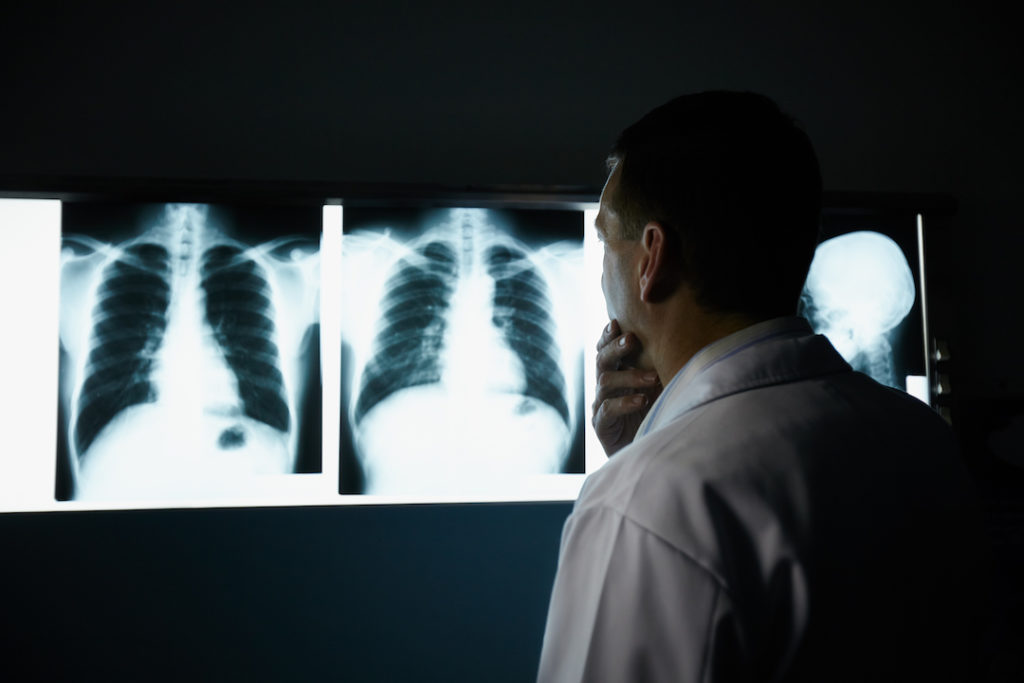5 Causes of Lung Cancer That Have Nothing to Do With Smoking
October 25 2018
When someone who has smoked cigarettes their entire life winds up with lung cancer, it’s sad-but not exactly surprising. The harmful effects of smoking are well researched and documented, and cigarette smoking is by far the number one risk factor for the disease, accounting for 80 to 90 percent of lung cancers.
What’s more, lung cancer from secondhand smoke leads to the deaths of 7,300 people who never smoked every year. Yes, that means you can get lung cancer without ever touching a cigarette. In fact, you can be the epitome of a healthy person-never smoke, exercise daily, and eat a healthy diet-and still get lung cancer (although, your risk will be lower).
Another problem: lung cancer symptoms don’t always pop up in the disease’s earliest stages, when it’s most easily treated. So what other lung cancer causes should you be aware of? And are any of them in your control? Here, the five main risk factors that go beyond cigarettes.
1) Exposure to asbestos
Working in some environments, such as shipyards, mines, textile plants, and mills, may expose workers to asbestos-a type of fibre that is heat-resistant and often used for insulation-making them several times more likely to develop lung cancer. Older buildings may also contain asbestos, however it is only dangerous if the materials containing it are damaged or disturbed, such as from construction work.
Consistently inhaling or swallowing asbestos fibres can bind them to the mucus in your throat, windpipe, or larger breathing tubes of the lungs. If the fibres travel to small airways or the outer lining of the lungs and chest, they can wreak havoc on your cells, potentially leading to lung cancer.
If you work in any of these conditions mentioned above, talk to your employer.
Note that your spouses can also be at risk. “It’s well documented that asbestos fibres can be on clothing and then get into the household, or someone can be exposed if they wash the clothes,” says oncologist Dr Joseph Treat. If you are concerned, find a contractor who can test your home for asbestos.
2) Exposure to other carcinogens
Other harmful substances can be found in the workplace and have been linked to a higher risk of lung cancer, including:
- arsenic
- diesel exhaust
- some forms of silica
- chromium
- nickel
- beryllium
- cadmium
- tar and soot
If you work around these products to limit your exposure as much as possible.
3) Air pollution
Living in places with higher levels of air pollution, such as cities or near roads with a lot of traffic, may increase the risk of lung cancer. The International Agency for Research on Cancer estimates that 223,000 people worldwide died from lung cancer caused by air pollution in 2010.
Many different types of particles (solid or liquid and big or small) get thrown into the air we breathe. This includes things like acids, chemicals, metals, soil, and dust. Our bodies are able to fight off bigger particles more easily-typically through a cough or a sneeze.
But those microscopic particles in the air are the most dangerous, since they can wiggle their way deep into the lungs or even your blood, potentially resulting in cancer.
4) HIV infection
People who are infected with the human immunodeficiency virus (HIV) may have more than twice the risk of lung cancer than those who are not infected. However, it’s unclear if this is due to higher smoking rates in those living with HIV or the infection itself.
Some researchers theorise, based on emerging studies, that immunosuppression-or the weakening of the immune system due to infection-and inflammation may also play a role, but more studies need to be done to determine if this is the case.
5) Family history
Having a parent or sibling who’s had lung cancer means you may be twice as likely to develop lung cancer as those without any family history, and your risk is even higher if your relative was diagnosed at a young age. However, it’s still unknown if the increased risk is because of shared genes or secondhand smoke exposure, since cigarette smoking tends to run in families.
It is likely a mix of both genetic and shared environmental factors (such as indoor air pollution in a family home), according to a 2017 review of research published in Oncology Letters, but very few genes specifically linked to lung cancer have been identified.
Article sourced from Prevention.
